How to enable UPnP in Windows
In Windows, UPnP (Universal Plug and Play) is usually disabled by default. Enabling UPnP allows computer devices to be detected by Windows automatically, making it easier to connect to and use associated devices. It also allows the computer to find other nearby network-connected computers. For security reasons, UPnP is best used on computers and networks in the home.
To enable UPnP on your computer, select your version of Windows below and follow the steps.
Windows 11
To enable UPnP in Windows 11, follow the steps below.
- Open the Control Panel.
- Click the Network and Internet entry.
- On the next screen, click the Network and Sharing Center option.
- In the left pane, click the Change advanced sharing settings link.
- In the Public Networks section, click the Network discovery toggle to the On
 position.
position.
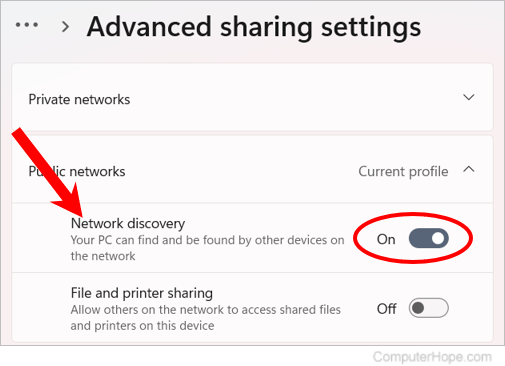
Windows 7, 8, and 10
To enable UPnP in these versions of Windows, follow the steps below.
- Open the Control Panel.
- Click Network and Internet
- Click Network and Sharing Center.
- In the left pane, click the link for Change advanced sharing settings.
- In the Network Discovery section, select Turn on network discovery and click the Save changes button.
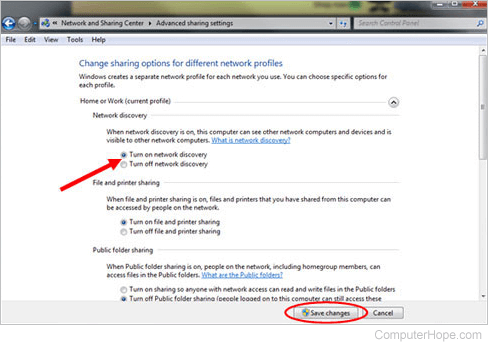
UPnP now automatically starts when you turn on your computer.
If you're having issues getting UPnP to work after following the steps below, check for a firmware update for your router that addresses any UPnP issues. See: How to update a router firmware.
Windows Vista
To enable UPnP in Windows Vista, open the Windows Control Panel. Locate and click the icon for Network and Sharing Center.
In the Sharing and Discovery section, click the arrow button to the right of the Network discovery option. Select the option for Turn on network discovery and click the Apply button.
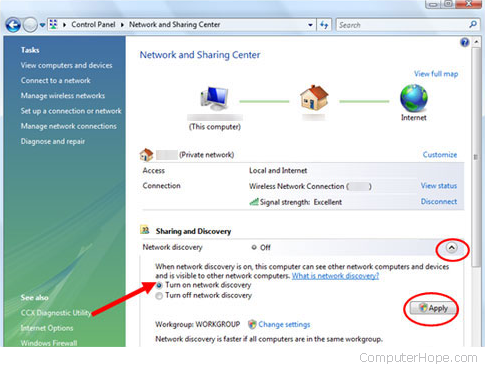
UPnP now automatically starts when you turn on your computer.
If you're having issues getting UPnP to work after following the steps below, check for a firmware update for your router that addresses any UPnP issues. See: How to update a router firmware.
Windows XP
For UPnP to work in Windows XP, ensure the Internet Gateway device appears in Network Connections and the router appears in My Network Places.
For the first device, open up the Network Connections window. Go to Start > Run, type ncpa.cpl in the text field, and then press the Enter. Check if the Internet Gateway device is displayed, as shown below.
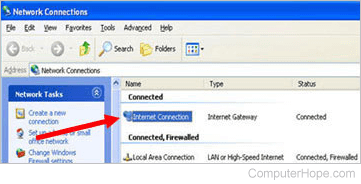
For the second device, click the link for My Network Places in the Network Connections window (left pane, Other Places section). Check to see if your router is displayed.
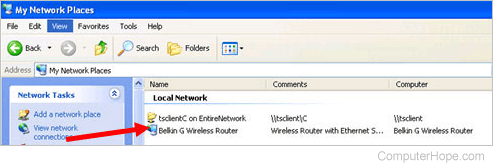
If these devices are not displayed, ensure the correct components are installed in Windows XP. To check this, go to Start, Run, type appwiz.cpl in the text field, and press Enter.
In the Add or Remove Programs window, click the Add/Remove Windows Components link in the left pane. In the Windows Components Wizard window, scroll down until you find Networking Services. Select this in the list and click the Details button. Ensure the Internet Gateway Device Discovery and Control Client and UPnP User Interface options are checked, and click the OK button. On the Windows Components Wizard window, click the Next button and follow the directions to install the new components.
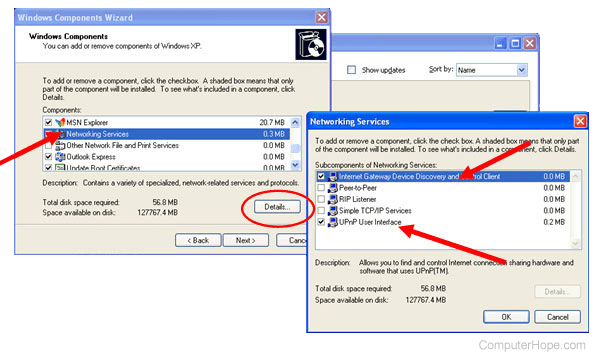
Now, start the UPnP service to enable it. To do this, go to Start, Run, type services.msc in the text field, and press Enter.
Find the SSDP Discovery Service option and double-click it with your mouse. In the window that opens, on the General tab, select Automatic in the Startup type drop-down list and click the OK button.
UPnP now automatically starts when you turn on your computer.
If you're having issues getting UPnP to work after following the steps below, check for a firmware update for your router that addresses any UPnP issues. See: How to update a router firmware.
